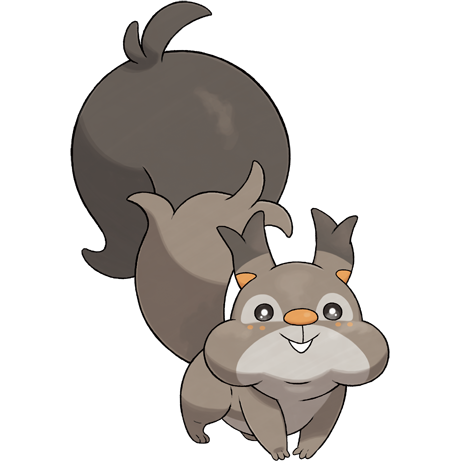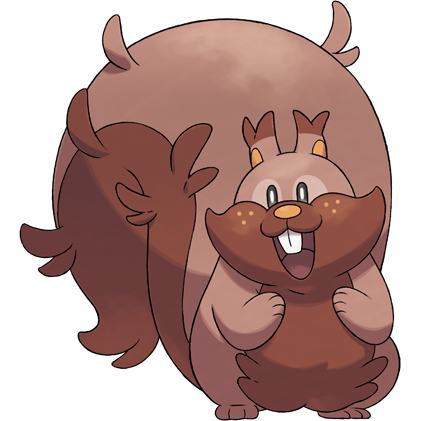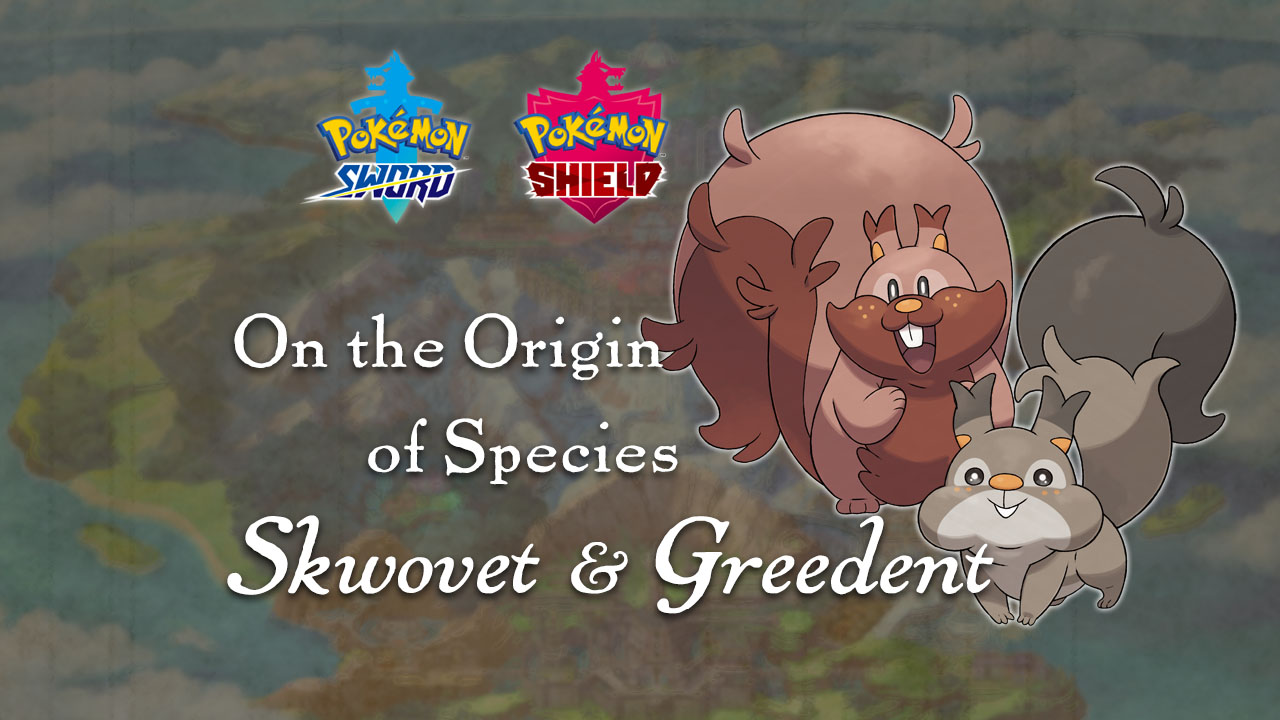In this recurring series, I’ll analyze the origins of Pokémon designs, their culture, and their historical allusions to British culture.
Today we’re going to take a look at one of the earliest Pokémon you encounter in the games.
Skwovet

Skwovet’s name seems to be a combination of “squirrel” and “covet’. Unlike Pachirisu, it has a Normal typing and is much hungrier (and shockingly, not Electric-type).
It is probably based on the eastern gray squirrel, a squirrel that is common in the Eastern United States. These animals are especially common during autumn, when they will run around collecting acorns and other foods to bury for winter.
They will go to great lengths to get food, and can be seen jumping on bird feeders. Their attempts can be quite humorous and it’s too bad we didn’t get any fun animations based on this behavior in Galar. It could be argued that Skwovet are slightly less agile than their real-world counterparts and wouldn’t be able to pull off such acrobatics.
While they are a nuisance in America, they’re an invasive species in Europe. The native red squirrels of Great Britain have been displaced and their population has been dwindling since the gray squirrels were introduced to the ecosystem in 1876.
This aggressive need for food is a key part of the Pokémon’s behavior in the Pokédex.
Found throughout the Galar region, this Pokémon becomes uneasy if its cheeks are ever completely empty of berries.
It eats berries nonstop—a habit that has made it more resilient than it looks. It’ll show up on farms, searching for yet more berries.
The Pokédex makes no mention of its potential origins, that it was brought to Great Britain like Yungoos. If it had been from another region, it may have been Unova.
It should also be noted that Skwovet’s shiny form has a strong red hue, resembling a red squirrel and its evolution Greedent.
Greedent

Perhaps its origins have changed, as Skwovet evolves into a native red squirrel from Great Britain. In addition to its red hue, its tail has grown much longer and it appears to have a wider shape. Like red squirrels, it has tall, thin ears. It’s name is most likely a combination of “greed” and “rodent”.
It stashes berries in its tail—so many berries that they fall out constantly. But this Pokémon is a bit slow-witted, so it doesn’t notice the loss.
Common throughout the Galar region, this Pokémon has strong teeth and can chew through the toughest of berry shells.
One behavior of squirrels in autumn is the collection and burying of acorns and other nuts. As the cold months of winter continue, the squirrels may retrieve these caches to eat and maintain their body fat. Acorns in particular are good sources of energy compared to other nuts because they require less effort to open.
However, not all of these food caches are retrieved. Perhaps due to being slow-witted, or forgetfulness, the majority of these acorns are not retrieved. Instead, the acorns have been buried in the ground. With water and soil, the acorns will grow into an oak tree. In this way squirrels play a vital role in the continuation of ecosystems.
Greedent appears to take a similar role. It keeps berries stashed away for later, perhaps during winter, but it is unable to keep track of them all. The berries that fall out end up may grow into new berry trees.
Perhaps losing berries is also an allusion to the red squirrels being unable to compete with food.
Conclusion
Skwovet and Greedent are not just basic squirrels. They allude to Great Britain’s environmental challenges of invasive species. They also touch on the concept of ecosystems being constantly renewed through the planting of seeds. Waiting in berry trees to strike mirrors the aggressive nature of squirrels and their signature move Stuff Cheeks mirrors their consumptive behavior.
What do you think of these Pokémon? Leave your thoughts in the comments below, or join our Discord server!

